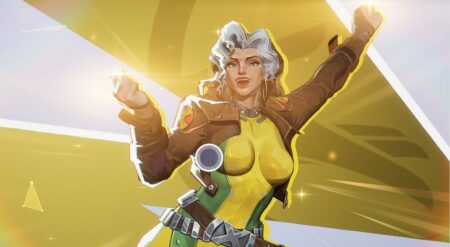The second hero in Marvel Rivals Season 3.5, developed and published by NetEase Games, continues the trend of self-healing DPS. But while Blade (Gabe Kunda, Diablo IV) shares some of the self-preservation elements of the Phoenix, he has a far more down-to-earth approach. Blade’s direct approach to damage dealing feels like a great fit, not only for the game, but also for his character as well.
The biggest mistake I see many new Blade players making is overextending. With his built-in aggression, Blade feels like he wants to wade into the thick of it and slash away. And he does, to a point. However, blindly throwing him into huge groups of enemies is likely to result in nothing more than feeding some ultimate charge to the opponent. Blade is a brawler, but he’s not a diver.
Another thing about Blade that makes him stand out is that he is one of the few characters in the game who excels on both offense and defense. In his case, the defense. Being able to stay close to his team and push enemies back allows him to use his kit to the fullest, while never being in danger of overextension. Also, his pair of primary weapons lends him to a defensive role. He can poke the enemy as they approach, and then switch over to do big damage once they reach his front line.
Blade is an absolute threat at mid-range and close-up.

That pair of primary weapons takes the form of a sword and a shotgun, respectively. While the shotgun doesn’t have a great range, it’s in the ballpark of Invisible Woman‘s primary fire, it allows the Daywalker to harass enemies when they are out of reach. This offers him a way to contribute without throwing himself bodily into every skirmish, even if the odds are against that plan.
Blade’s first ability is Bloodline Awakening. It increases his slash speed with his sword and adds a whirlwind slash to his attack combo. During the duration of this ability, Blade receives reduced healing, but his attacks gain lifesteal. If Blade has his Shotgun out when Bloodline Awakening is activated, he will automatically swap in his sword. Likewise, if the shotgun is swapped in during the effect’s duration, it will immediately end.
This ability creates the crux of Blade’s melee aggression. It gives him a strong amount of self-sustain and damage output, but doesn’t turn him into an unkillable monster. He can 1v1 many characters, but neither of the effects he gains during the ability’s duration is strong enough to save him against overwhelming odds.
Being precise with Daywalker Dash will separate the great players from the pack in Marvel Rivals Season 3.5.

Daywalker Dash is the second ability that makes up the kit. It sends him dashing forward, delivering damage and a special effect depending on the weapon he has equipped. His sword delivers a slow effect, while his shotgun applies a healing reduction to the hit enemy. Two charges of Bladewalker Dash can be held at a time.
This is one of the elements of Blade’s kit that will separate great players from everyone else. The temptation to use his second dash to further harass enemies, or dive into the back line, is strong, but level-headed players will recognize that the second charge is an escape plan. Get in, get hits, maybe a kill, and get out.
Further aiding in Blade’s survival is the ability Scarlet Shroud. When active, the character enters a parry stance. Unable to attack, he suffers less damage from the front and reduces the cooldown of Daywalker Dash.
During my play time with Blade, this ability felt great. Being able to weather a bit of damage when I found myself out of position without a dash ready was immensely helpful. Combined with some heals from a support, the ability provides a strong defensive option, one that many DPS in the game lack.
Dealing damage and self-sustaining can shut down the other team, but this Duelist takes finesse.

Finally, we come to Blade’s ultimate ability: Thousand-Fold Slash. After a brief charge-up period where Blade can line up his attack, the Daywalker charges forward in a straight line, leaving a slash zone behind him. Enemies in the zone are automatically hit, and anyone hit by the attack suffers reduced healing.
This feels like a powerful ability that requires coordination. Blade isn’t going to get triple kills frequently just by popping his ultimate, but the substantial damage it can do, combined with coordinated fire from his team, can easily shred a front line, since the healing they receive will be cut down.
Blade’s kit provides him with a strong mix of offense and self-sustain. While he doesn’t feel like the type to rack up the highest kill counts in the game, his ability to keep himself alive, deal damage, and hinder the opposing team’s support effects feels like a powerful recipe to tip team fights in the favor of coordinated attacks.
Marvel Rivals is available to play now for PC, PlayStation 5, and Xbox Series X/S.








